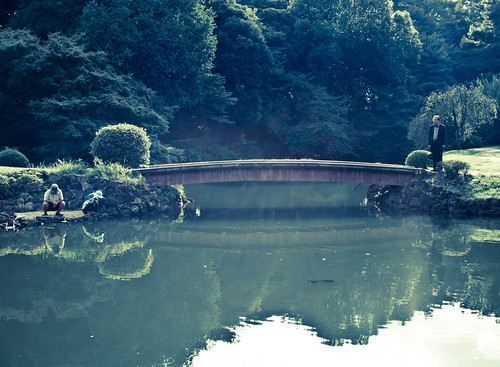Until recently Hamarikyu Gardens was my favorite green spot in Tokyo. Lately I have been going often for walks to Shinjuku Gyoen park; I already knew the park for the beauty of its cherry trees during Hanami and the blossoming of its chrysanthemums in November, but I still hadn’t explored all its corners. Some of the spots of Shinjuku Gyoen are so charming that it has become now my favorite park in Tokyo, and one of the places where I like to relax and take pictures.
When Tokugawa Ieyasu took control of Japan after Sekigahara battle, he divided the country in around 200 “fiefdoms”, each one of them controlled by a daimyo (feudal lord). The western part of Edo’s castle was assigned to the Naito family, whose residence was established in Shinjuku Gyoen park. During more than 250 years it was the home and the gardens of the Naito family but during the Meiji restoration they lost the ownership of the gardens and they were given to the Emperor. The area was renamed to Shinjuku Gyoen (新宿御苑), that literally translated means “Imperial Gardens of Shinjuku”.
Nowadays the garden is owned by the government and even though you have to pay 200 yen to go in, it’s really worth it. You can walk and relax for hours, and take great pictures (detailed map). It opens from 9:00 a.m to 4:30 p.m all days except Mondays and you can easily reach it from Shinjuku Gyoen station in Marunouchi line or from Sendagaya station in the Sobu line.






































